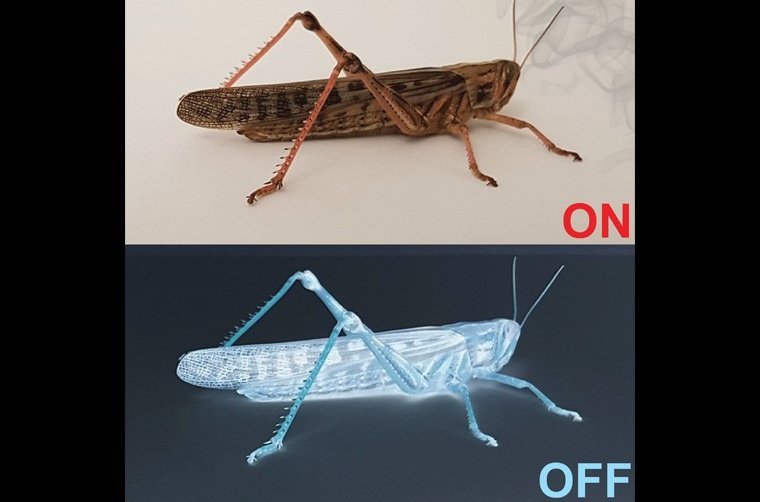| News / Science News |
The surprisingly simple 'arithmetic' of smell
Why don't other smells or different environmental factors get in the way of the experience of smelling individual odors? Researchers at Washington University in St. Louis turned to the locust to find out.

When ON neurons fire, a locust can smell an odor. OFF neurons fire once the smell goes away. Photo: Raman lab
Smell it inside or outside, summer or winter, in a coffee shop with a scone -- coffee smells like coffee.
What they found was surprisingly simple, according to Barani Raman, a biomedical engineer, and colleagues.
The scientists have been studying locusts for years, watching their brains and their behaviors related to smell in an attempt to engineer bomb-sniffing locusts. Along the way, they've made substantial gains understanding the mechanisms of smell.
"This research helps us understand how odors can be perceived in the real world, and also how these complex patterns of neural responses map to a really simple decoding scheme," said Kenneth Whang, a program director in NSF's Division of Information and Intelligent Systems.
To understand how a locust can consistently recognize smells regardless of context, locusts were trained to associate an odor with food, their preference being a blade of grass. After a day without food, a locust was exposed to a puff of odor, then given a blade of grass.
In as few as six such presentations, the locust learned to open its palps, sensory appendages close to the mouth, in expectation of a snack after simply smelling the training odorant. Just like recognizing the smell of coffee, the trained locust could recognize the odor and did not let other factors get in the way.
At this point, researchers began looking at which neurons were firing when the locust was exposed to the odor under different conditions, including in conjunction with other smells, in humid or dry conditions, when they were starved or fully fed, trained or untrained and for different amounts of time.
Under these different circumstances, the scientists saw inconsistent patterns of neurons activated even though the locust palps opened every time. These results have much to tell us about the complex patterns of neural responses in animals, the researchers say. (National Science Foundation)
YOU MAY ALSO LIKE





